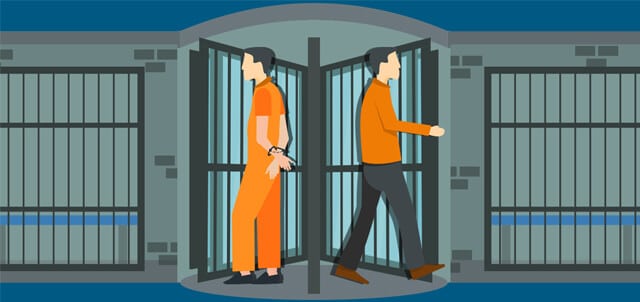
What is recidivism? Well, it is the tendency of a person convicted of a crime to commit another crime after they have been released from incarceration. It is also a hotly debated topic in the USA. Incarceration statistics influence the way in which we treat someone who has been released from a prison after serving their term.
But, as I have been researching the subject, I have found a problem. I cannot find a stable set of statistics about recidivism. Here in the State of Alabama, the official recidivism rate is about 33% three years after release. That means that about 7 out of 10 released inmates are still out of prison at the end of three years after release.
But wait, if you go to the Federal Bureau of Crime Statistics, you can find a study that the recidivism rate is about 89% after 9 years. That is defined as only 1 released inmate has managed to not be arrested after 9 years. But wait, arrested, and incarcerated are two different words! Not every person arrested is found guilty of a crime and sent to prison.
The Prison Entrepreneurship Program (PEP) gives an overall rate of 50% after three years. You can see the problem. What are the true recidivism statistics? If we follow the Federal government, released inmates are unsafe to hire or let near us because they are almost certain to commit a crime. If you look at the State of Alabama, it is worth taking a chance on a released inmate because 7 out of 10 will not cause you a problem and are worth hiring. If you use the PEP figures, you might as well flip a coin on hiring a released inmate and have a 50-50 chance of getting someone who will turn on you.
It is no wonder that it is difficult for the typical business owner to know whether to hire a released inmate and why most play it safe. The result, however, is that 70% of released inmates are unable to get a job within the first year of their release. By that I mean not even a low paying burger joint type of job. Not surprisingly, business owners want someone else to take a chance on the released inmate.
So, what is the solution? A big part of it is that we need to standardize our definitions. Are we using a three-year a five-year or a nine-year period to collect our statistics? Are we measuring back in prison or simply arrested? There are some challenges for both businesses and criminologists. As PEP points out, most state Departments of Correction cannot wait nine years for the results of recidivism studies. Generational differences in behavior, at least as far as crime is concerned, are often found in 10 year periods. So by the time results are seen at the nine-year mark, the next “generation” may be exhibiting different behavior. So the three-year studies make more sense but may be slightly less reliable.
Let me give you an example. In 1969, crime started going up. Despite the increasingly strict laws that began to be passed in the 1980s crime stayed at about double the 1968 rate and four times the 1960 rate until around 2000. Then the crime rate began to drop. By 2010, the crime rate had returned to 1968 levels. Ten-year studies would not have been able to properly recommend policies during either the fast increasing 1970s rate or the fast decreasing 2000s rate. Only the three-year studies could have responded rapidly enough to give reasonable policy recommendations.
So, again, what is the solution? I do not know. I am not a criminologist nor am I an expert in criminogenic factors. What I do know is that we need to get on the same page. What recommendations can we make to your average citizen, to the business owner who must hire, to the landlords who must rent if we are not even sure what is actually happening? However, as a Christian, there are some answers available. More on that in a post later this week.



One idea I have had for a few years is coupling the raising of the minimum wage with the establishment of a “probationary” minimum wage for people with a criminal record that they can be hired at for like two years. That way, some employers would be hopefully willing to take a chance due to being able to pay less. The coupling with an overall minimum wage hike would hopefully bring aboard progressives.
That would be a reasonable economic incentive. However, the probationary wage would need to be high enough to allow the released inmate to live. If the released inmate cannot at least achieve what used to be called “genteel poverty” then he or she will probably end up transgressing.